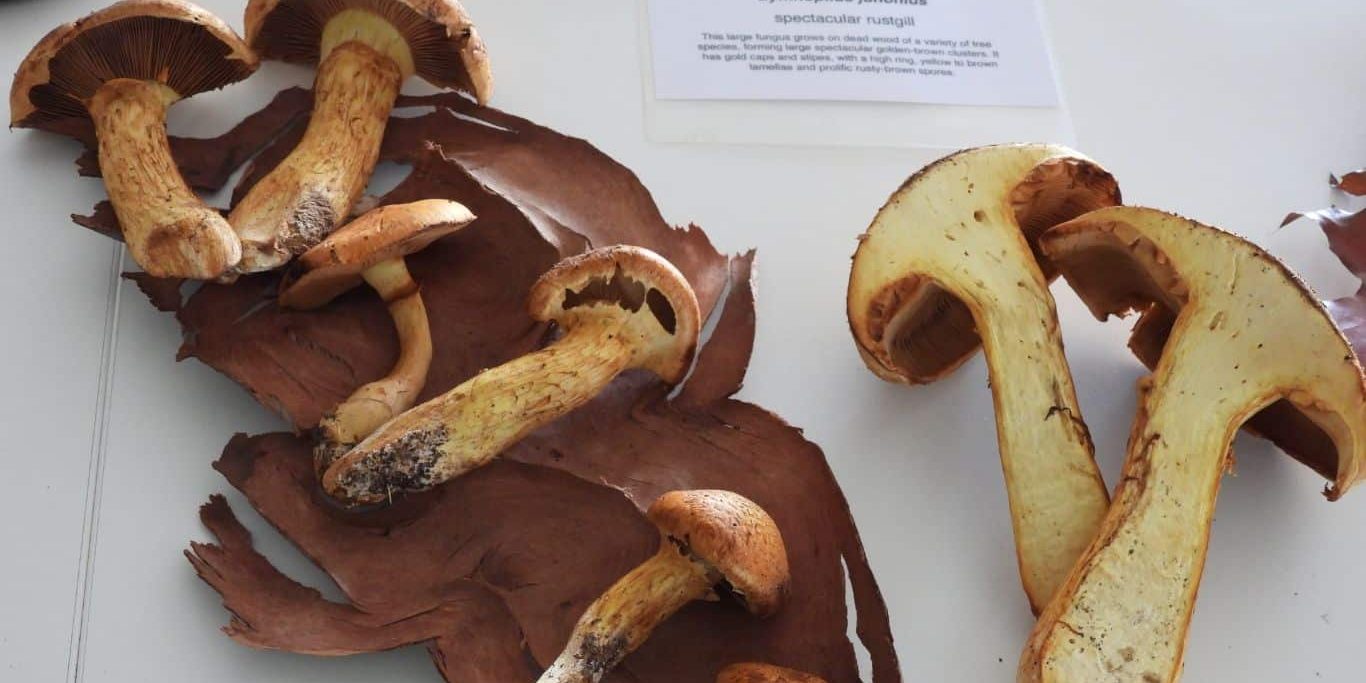There are three Fs we never want to separate as they are so well linked in a natural biodiverse environment. On Wednesday the 14th of May at CSU, we were blessed with the company of Alison Pouliot who taught us about the third kingdom. That of Fungi. We were taught at school there were only two kingdoms; plants (Flora) and animals (Fauna). However, there is a third Kingdom which is Fungi, and it is often left out. A whole new Kingdom on its own. Fascinating Fungi has a very important role to play in our ecosystems.
Like most components of the landscape fungi have jobs. They are very good at being the architects of the soil. They put some structure to the soil by holding the particles of soil away from each other and stopping the soil from becoming compacted. That is if you don’t drive over it. The fungi will do a good job at aerating the soil and allowing water and air to move freely through it.
Often when a landscape is damaged, it is not the trees that return first but the fungi. They try to protect the surface of the soil and build a protective layer. We often think of Mushrooms when we talk about fungi but there are many other types of fungi. Some of them edible and others that can kill you. So, make sure you know the difference before consuming them.
Fungi help to break stuff down. They are the rotter’s and the recyclers. They break down bark, leaves and rocks to form nutrients that other plants can make use of.
They don’t produce Chlorophyl, and they don’t have a stomach. They do have an internal digestive system which helps with the process. They actually slobber. Sounds gross but it is wonderful for the rotting and recycling process so necessary for ecosystems. That is why it is good to leave fallen branches, sticks and leaves on the ground for the nutrient and soil build up. By taking the fallen branches away from the soil surface, you are denying the soil of much needed potential soil nutrient.
Trees form a relationship with fungi. Trees are not great at getting their own water and nutrients, so fungi are the conduit. They have a mutually beneficial relationship. There is also a wood wide web that exists under the ground which is facilitating the relationship and connections.
Alison demonstrated this with the aid of a pipe and some stockings tied to each other to replicate what happens in the soil. Members of the group held the stockings at various locations in the room so we could visualize what happens under the soil. This connection often helps trees in the community that are not doing so well. In a hub of trees, the mother tree can be connected to forty other trees. Amazing stuff happens under the ground.
Some of the fungi are collaborative and some are competitive, which is evident in some woods where there is a fighting border which is visible in a turned piece of wood you might have at home. A bowl for example might have a wriggly black line through it.
There are also fungi that has specific partners, for example Eucalyptus trees. Orchids are another example. This is probably why there are endangered orchids which no longer have suitable fungi in the soil to assist them. All ecosystems need to maximise biodiversity to build resilience and fungi is a huge part of that ecosystem.
So, when you see a mushroom, have a look around it and you will often find more of them popping up in a rough circle shape. Remember the mushrooms are the fruiting bodies and there is a network that joins them all underneath.
Thank you to Alison for a fascinating few hours in the kingdom of fungi. We had a ball.
– Kath Tenison, Bidgee Woodlands.
This initiative made possible by the NSW Landcare Program. A collaboration of Local Land Services NSW and Landcare NSW, supported by the NSW Government.







